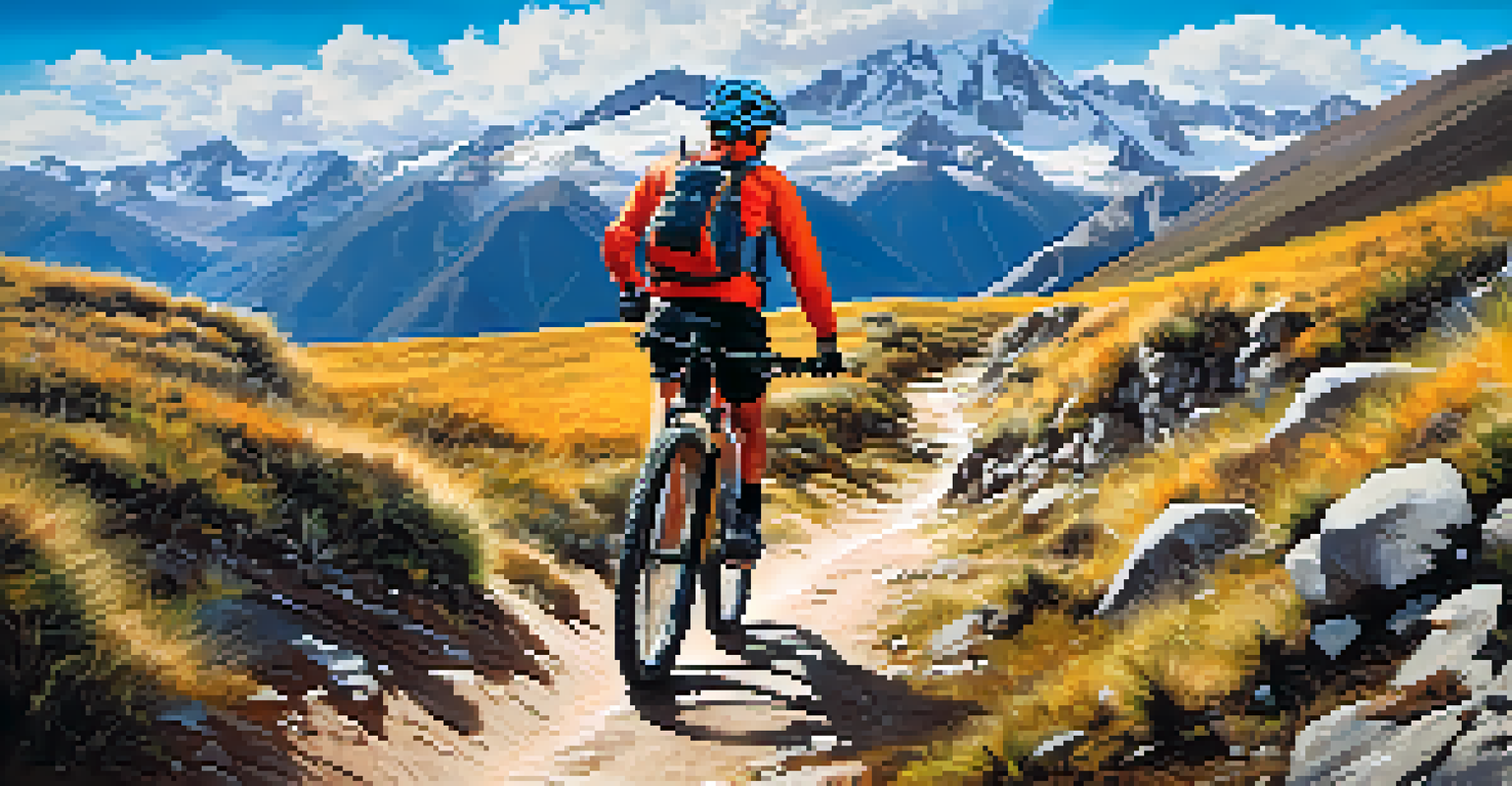Safety Tips for Adventure Sports Enthusiasts in Peru

Know Your Limits: Understand Your Skill Level
Before diving into any adventure sport, it's crucial to know your own skill level. Whether you’re a novice or an expert, choosing activities that match your abilities can prevent accidents and enhance your enjoyment. For instance, if you’re new to rock climbing, tackling a challenging route could lead to injury rather than a thrilling experience.
Adventure is worthwhile in itself.
Additionally, take time to assess the conditions. Weather can significantly impact your performance in adventure sports, so ensure you're prepared for any changes. If it's your first time kayaking in the Amazon, opting for calmer waters might be a wiser choice until you build confidence.
Related Resource
Finally, don’t hesitate to seek advice from local guides. They can provide valuable insights about the terrain and help you make informed decisions that align with your skill set.
Gear Up: Invest in the Right Equipment
When engaging in adventure sports, having the right gear is essential for both safety and performance. Whether you’re zip-lining through the Sacred Valley or trekking the Inca Trail, proper equipment can make all the difference. For example, a well-fitted helmet can be a lifesaver in mountain biking.

Moreover, ensure that your gear is in good condition before use. Regularly check for any signs of wear and tear, as equipment failures can lead to serious accidents. If you’re unsure about what’s necessary, consulting with local experts can guide you in selecting the best gear for your adventure.
Know Your Limits in Adventure Sports
Understanding your skill level and choosing activities that match can enhance safety and enjoyment.
Finally, don’t forget about personal safety items like first aid kits or emergency beacons. These can be vital in case of unexpected situations, ensuring you’re prepared for anything that comes your way.
Stay Informed: Research Your Adventure Destination
Understanding the environment where you’ll be engaging in adventure sports is critical for your safety. Each location in Peru, from the Andes to the coast, comes with its own set of challenges. Researching these areas can help you anticipate potential risks, such as altitude sickness in mountainous regions.
The greatest danger in times of turbulence is not the turbulence; it is to act with yesterday's logic.
Additionally, familiarize yourself with the local wildlife and natural hazards. For instance, knowing how to identify poisonous plants or dangerous animals can keep you safe. Guides often have this knowledge, so don’t hesitate to ask them for insights.
Related Resource
Lastly, stay updated on local regulations and safety guidelines. Different regions may have specific rules regarding adventure sports, and being aware of these can help you avoid fines or unsafe situations.
Buddy System: Adventure with a Partner
One of the best safety tips for adventure sports enthusiasts is to never go solo. Having a buddy not only makes the experience more enjoyable but also ensures that help is readily available in case of an emergency. For instance, if you're paragliding in the stunning landscapes of Peru, having someone alongside you can be a reassuring presence.
Additionally, a partner can help keep an eye out for potential hazards. While one person focuses on the thrill of the adventure, the other can monitor the environment, ensuring safety isn’t compromised. This teamwork can be especially vital in high-risk situations, such as white-water rafting.
Invest in Proper Adventure Gear
Having the right equipment is essential for both safety and performance during adventure activities.
Lastly, agree on a communication plan before starting your adventure. Establishing signals or check-in times can help keep everyone informed and safe throughout the experience.
Listen to Your Body: Take Breaks When Needed
Adventure sports can be exhilarating, but they can also be physically demanding. It’s crucial to listen to your body and recognize when it’s time to take a break. For instance, if you feel fatigued while trekking through the Amazon rainforest, resting can prevent exhaustion and keep you safe.
Moreover, allow your body to acclimatize, especially in high-altitude areas like Cusco. Take the time to adjust to the altitude to avoid altitude sickness, which can detract from your experience and pose serious health risks.
Related Resource
Finally, don't be afraid to modify your plans if you’re not feeling up to a challenge. It’s better to enjoy a relaxed hike than to push through and risk injury or fatigue.
Emergency Preparedness: Have a Plan
No one wants to think about emergencies while enjoying adventure sports, but having a plan can provide peace of mind. Before you set out, familiarize yourself with the nearest medical facilities and have a basic understanding of how to reach them. This knowledge can be crucial if an injury occurs.
Additionally, make sure to have emergency contact numbers saved on your phone. In remote areas, signal may be weak, so consider carrying a portable charger or a satellite phone if your adventure takes you deep into the wilderness.
Stay Hydrated and Nourished
Maintaining hydration and nutrition is crucial for sustaining energy and preventing health issues during adventures.
Lastly, share your plans with someone back home or a local guide. Let them know your itinerary and expected return time, so they can alert authorities if you don't return as planned.
Environmental Awareness: Respect Nature
When participating in adventure sports, it's essential to respect the environment. Peru is home to stunning natural landscapes that deserve protection. Always follow the Leave No Trace principles, which encourage minimizing your impact on the surroundings, from proper waste disposal to avoiding damaging flora.
Moreover, be mindful of local wildlife. Disturbing animals, especially in their natural habitats, can lead to dangerous encounters. For instance, if you're hiking in the Andes, maintaining a safe distance from wildlife ensures both your safety and the preservation of these species.

Finally, consider supporting local conservation efforts. Many organizations focus on preserving Peru's natural beauty, and participating in clean-up events or eco-friendly tours can enhance your adventure while giving back to the environment.
Stay Hydrated and Nourished: Fuel Your Adventure
Staying hydrated is a crucial aspect of safety that’s often overlooked by adventure sports enthusiasts. Dehydration can lead to exhaustion and worsen altitude sickness, so be sure to drink plenty of water throughout your activities. Carry a reusable water bottle to make rehydration easy and environmentally friendly.
Additionally, nourishing your body with healthy snacks can keep your energy levels up during physical exertion. Items like trail mix, energy bars, or locally sourced fruits can be great options for fueling your adventures, especially during long hikes or bike rides.
Finally, listen to your body’s hunger cues. If you start feeling fatigued or lightheaded, it might be time to take a break and refuel. Remember, a well-fueled adventurer is a safe and happy adventurer!